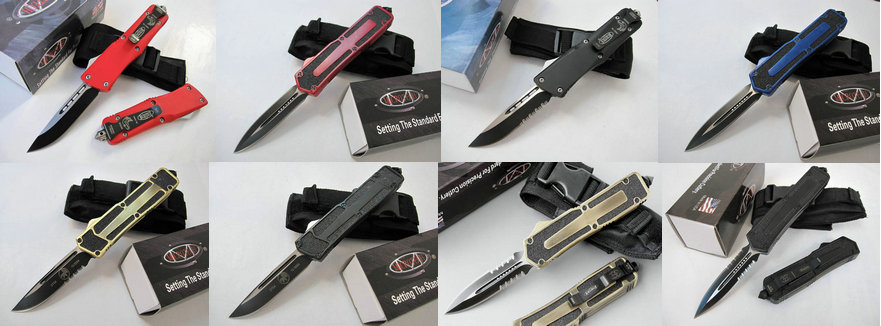Body of the article
List of blade materials
Authorпјҡз®ЎзҗҶе‘ҳ Released inпјҡ2014-07-27 22:13:29 Written wordsпјҡгҖҗBigгҖ‘гҖҗIn theгҖ‘гҖҗSmallгҖ‘
Alloy steels
Main article: Alloy steel
- 5160, Spring steel. Popular forging steel for swords and large knives. High toughness and good wear resistance
- V-toku1 / V-toku2, alloyed steel with W /Cr's original characteristics
Popular sword manufacturers that use 5160 spring steel are Hanwei Forge and Generation 2. 5160 spring steel is mainly used on Medieval type swords
Tool steels
Main article: Tool steel
Tool steel grades used in cutlery : A, D, O, M, T, S, L, W. See also AISI Tool Steel Grades.
The following are tool steels, which are alloy steels commonly used to produce hardened cutting tools:
- A2, a steel that trades wear resistance for toughness. It is used in custom made fighting knives by makers such as Phill Hartsfield, Rob Criswell, Mike Snody and John Fitzen (Razor Edge US).
- A3, (No description available)
- A4, (No description available)
- A5, (No description available)
- A6, This grade of tool steel air-hardens at a relatively low temperature (approximately the same temperature as oil-hardening grades) and is dimensionally stable. Therefore it is commonly used for dies, forming tools, and gauges that do not require extreme wear resistance but do need high stability.
- A7, (No description available)
- A8, C .55% Mn .30% Si .30% Cr 5.00% Mo 1.25% W 1.25%
- A9, (No description available)
- A10, This grade contains a uniform distribution of graphite particles to increase machinability and provide self-lubricating properties. It is commonly used for gauges, arbors, shears, and punches.
- D2, has a high chrome content of 12.00%, it is called "semi-stainless", because of the lack of free Chromium in solution. While not as tough as premium carbon steels, it is much tougher than premium stainless steels.
- O1, popular forging steel. Good wear resistance and edge stability. Relatively tough, but not as much as A2 or 5160. It is most commonly used by Randall Knives, Mad Dog Knives, and many other custom knife makers.
- M2, slightly tougher than D-2. Capable of keeping a tempered edge at high temperatures. However, it is hardly used anymore in factory production knives, CPM M4 is becoming more popular. Custom knife makers still use it for knives intended for fine cutting with very thin edges.
- M4, see High speed CPM REX M4.
- T1 (No description available)
- T2 (No description available)
- S1 is a shock-resistant medium carbon tool steel which combines moderate hardness with good impact toughness. Carbon content .40 - .55%.
- W1, water hardening tool steel.High carbon content.
- W2, tool steel, holds edge quite well. Not very tough. Has a carbon content of 1.5.[1] Correction. Most readily available W2 has a carbon content of no more than 1-1.1%. It can be left at high hardness levels (it can attain a quenched hardness of 67 Rc) and still be quite tough especially in larger knives with thicker spines as the core of the thick portion of the blade does not attain full hardness because of the shallow hardening nature of the steel. Bill Moran considered it to be almost a tough as 5160, but it was unavailable for a period of time
Products
Spyderco knife
Gerber knife
Benchmade
Browning knife
Extrema Ratio
Strider Knife
Cold Steel knife
Columbia CRKT
Damascus steel
BUCK Knife
FOX knife
BOKER Knife
Microtech Knife
Chris Reeve knife
Smith&Wesson
Forging Knife
Kershaw Knife
KABAR Knife
Machete Knife
Shirogorov knife
AITOR&DOPS
Enlan&Sanrenmu
Army Thorn
Other Brand knife
Other tools
Camping AXE
High quality Knife
Auto&Flail&Claw
Saber Knife
Zero Tolerance
Ontario knife
Neck Knife
OTF Knife
HX Outdoors
Jump Knife
Triquetrum
BENCHMADE OTF




